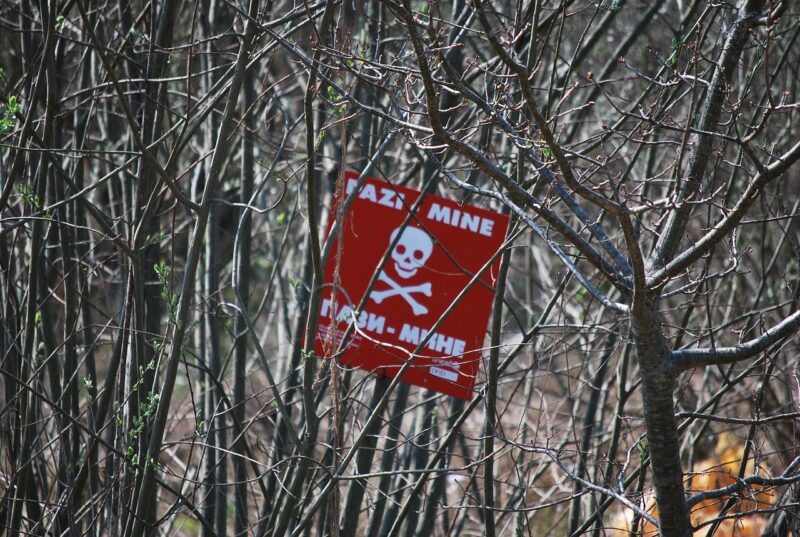Why Landmine Clearance Programs Are Critical for Post-Conflict Recovery
November 16, 2024

In the aftermath of conflicts, war-torn regions face numerous challenges that hinder their recovery. Among these challenges, the presence of landmines and unexploded ordnance (UXO) poses a severe threat to safety, infrastructure, and the rebuilding of communities. Landmine clearance programs play a critical role in post-conflict recovery and development, enabling societies to heal and thrive again.
1. The Impact of Landmines on Communities
Landmines are hidden killers that remain active long after the fighting has ceased. They disproportionately affect civilians, leading to countless injuries, deaths, and psychological trauma. Here are some statistics that illustrate the dire situation:
- According to the Landmine Monitor, an estimated 110 million landmines remain buried globally, affecting over 60 countries.
- In 2020 alone, more than 3,500 casualties from landmines and explosive remnants of war were documented, with a large percentage being civilians.
- Landmines significantly impact agriculture, restricting access to fertile land, which in turn affects food security and livelihoods.
These statistics underscore the urgency of addressing landmine contamination to pave the way for recovery and growth.
2. The Importance of Landmine Clearance Programs
Landmine clearance programs serve as a lifeline for communities attempting to rebuild in the wake of conflict. The importance of these programs includes:
- Safety and Security: The primary aim of landmine clearance programs is to ensure the safety of local populations by removing these deadly remnants of war. This paves the way for safe movement and normalcy in daily life.
- Access to Resources: Clearing landmines allows communities to reclaim agricultural land, rehabilitate infrastructure, and rebuild homes, which are essential for economic recovery.
- Psychological Healing: The presence of landmines creates a constant state of fear and trauma. Clearance efforts can help alleviate these fears, allowing people to rebuild their lives and communities.
- Social Stability: By addressing the dangers posed by landmines, clearance programs promote social stability and foster trust within communities, crucial elements in the rebuilding process.
The multifaceted benefits of landmine clearance underscore its vital role in post-conflict recovery.
3. How Landmine Clearance Works
The landmine clearance process is complex and requires extensive training, expertise, and resources. The typical process involves the following steps:
- Survey and Assessment: The first step involves evaluating areas suspected to be contaminated with landmines through surveys and assessments to prioritize regions for clearance.
- Clearing Operations: Trained professionals utilize specialized equipment, including metal detectors and protective gear, to locate and safely neutralize landmines.
- Land Rehabilitation: Following clearance, areas are often rehabilitated to make them safe for agricultural or communal use.
- Community Education: Clearance programs often include educational initiatives to teach communities about the dangers of landmines and how to remain safe while clearance efforts are ongoing.
This meticulous approach ensures that landmine clearance is conducted safely and effectively, minimizing risks to both operators and local populations.
4. Successful Case Studies of Landmine Clearance Programs
Several countries have implemented successful landmine clearance programs, providing valuable insights and lessons for future efforts. Here are some notable examples:
- Cambodia: Post-conflict, Cambodia faced severe landmine contamination. Through a combination of international support and local initiatives, significant portions of contaminated land have been cleared, allowing for agricultural recovery and community rebuilding.
- Afghanistan: The U.N. and various NGOs continue to work on clearing landmines and unexploded ordnance, enhancing safety for communities and enabling the return of displaced people.
- Bosnia and Herzegovina: A successful partnership between international organizations and local authorities has resulted in substantial landmine clearance, fostering recovery in the war-affected areas.
These case studies illustrate that effective landmine clearance is attainable through collaboration and support.
5. Challenges Facing Landmine Clearance Programs
Despite the importance of landmine clearance programs, several challenges impede their effectiveness:
- Funding and Resources: Landmine clearance requires significant financial investments and resources, which can be difficult to secure, particularly in regions facing multiple crises.
- Environmental and Geographic Conditions: Terrain and weather conditions can hinder clearance efforts, making certain areas difficult to access.
- Political Will: In many cases, the political situation may limit the capacity to prioritize and support landmine clearance efforts.
Addressing these challenges is crucial to enhancing the effectiveness and reach of landmine clearance programs.
6. Conclusion: A Call to Action
Landmine clearance programs are not merely a necessity; they are a fundamental component of post-conflict recovery. By removing physical threats and restoring communities, these programs foster hope and rebuild livelihoods.
It is our collective responsibility—governments, NGOs, and international organizations—to advocate for and support landmine clearance initiatives. Only then can we enable communities to rise from the ashes of conflict and build a brighter, safer future for all.
As we look forward, let’s ensure that every community has the chance to heal and thrive in peace without the fear of landmines lurking beneath the soil.







